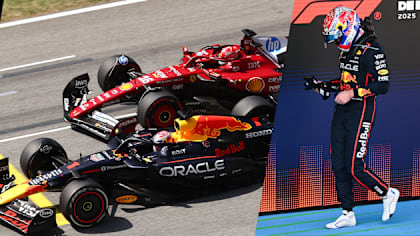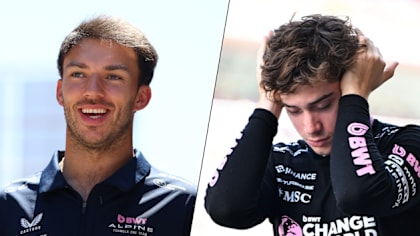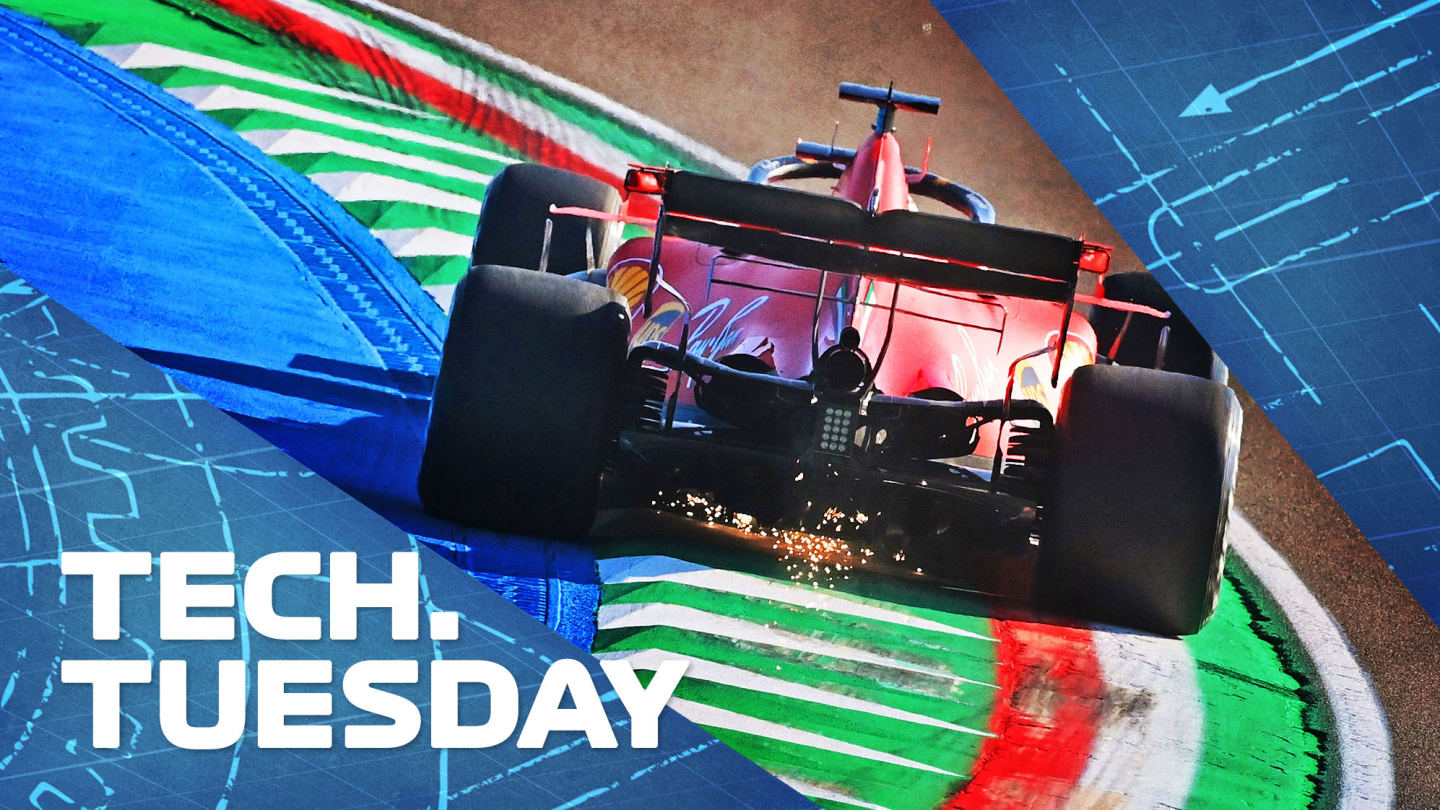
Technical
Why Ferrari reverted to their original diffuser spec in Imola after Portimao experiments

Share

Anyone keeping a close eye on the Ferrari SF1000 at Portimao would have spotted several different rear diffuser specifications running on the car, while the team reverted to their standard-spec elements for the races in Portugal and at Imola. In this week's Tech Tuesday, Mark Hughes investigates what they are up to, with technical illustrations from Giorgio Piola.
After their recent spate of aerodynamic developments, Ferrari arrived at Imola with the same combination of elements they raced in Portimao after a series of experiments during practice at the Algarve track.
That combination comprised the barge board, nose cape and forward turning vanes introduced at the Nurburgring, together with the outer floor introduced and raced in Portugal featuring the three small diagonal flaps ahead of the rear tyre in place of the previous 2020 arrangement of a single, bigger one-piece raised flap (see the illustration further down in this piece). These were combined with the car’s original diffuser, rather than the modified one which was trialled (but not raced) in Portimao.
READ MORE: What did we learn from the Eifel GP about ‘phase two’ of Ferrari’s upgrade package?
Ferrari have consistently maintained that some of the new parts are aimed very much at next year’s car and the inference from the sequence of different diffusers used is that the one trialled but not raced in Portimao was created just to give a direct comparison with the 2021 version, which differed only in the longer fences permitted this year. In this way the exact downforce loss of the shorter ’21 fences could be measured.

On the left, the 2021 spec diffuser tested at Portimao, on the right, a second spec, also tested in Portugal, but not run in races
But that 2020-spec version of the ’21 diffuser is not intended as a race item for this year’s car. Hence the reversion to the standard diffuser in the Portugal race and throughout the Imola weekend, as shown in the image below.
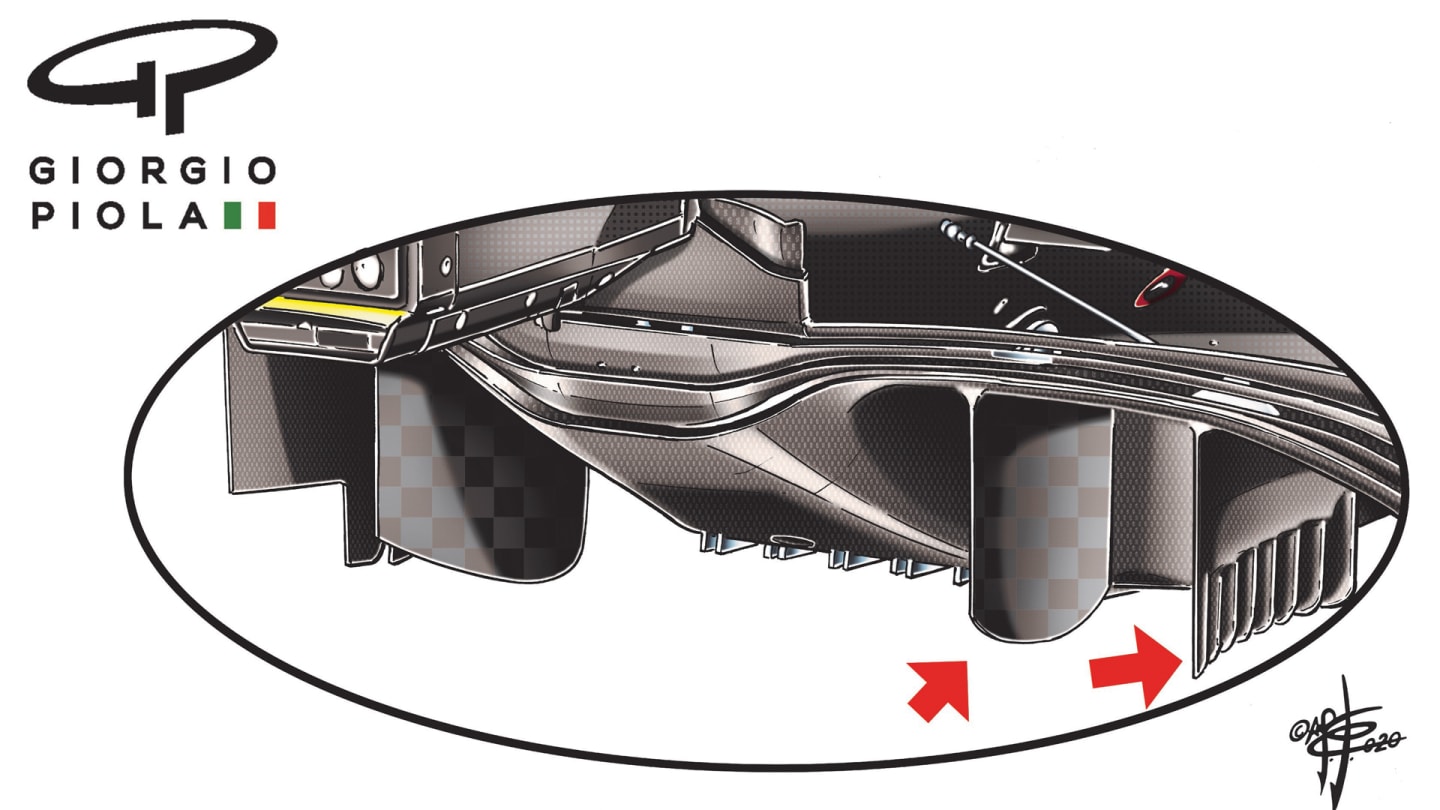
The standard spec diffuser, as used in the races at Portimao and Imola
The airflow around the diffuser will be quite different next year, given the narrower floor and banishment of floor slots. Hence, the different design.
READ MORE: How teams like Red Bull and Ferrari are already tackling the 2021 downforce cut
The standard 2020 diffuser features angled slots at the bottom of its outer wall and the alignment and arrangement of the fences is quite different.
By contrast the outer floor, barge board and cape are very much part of the SF1000’s development and have contributed to the car’s improved form of late.
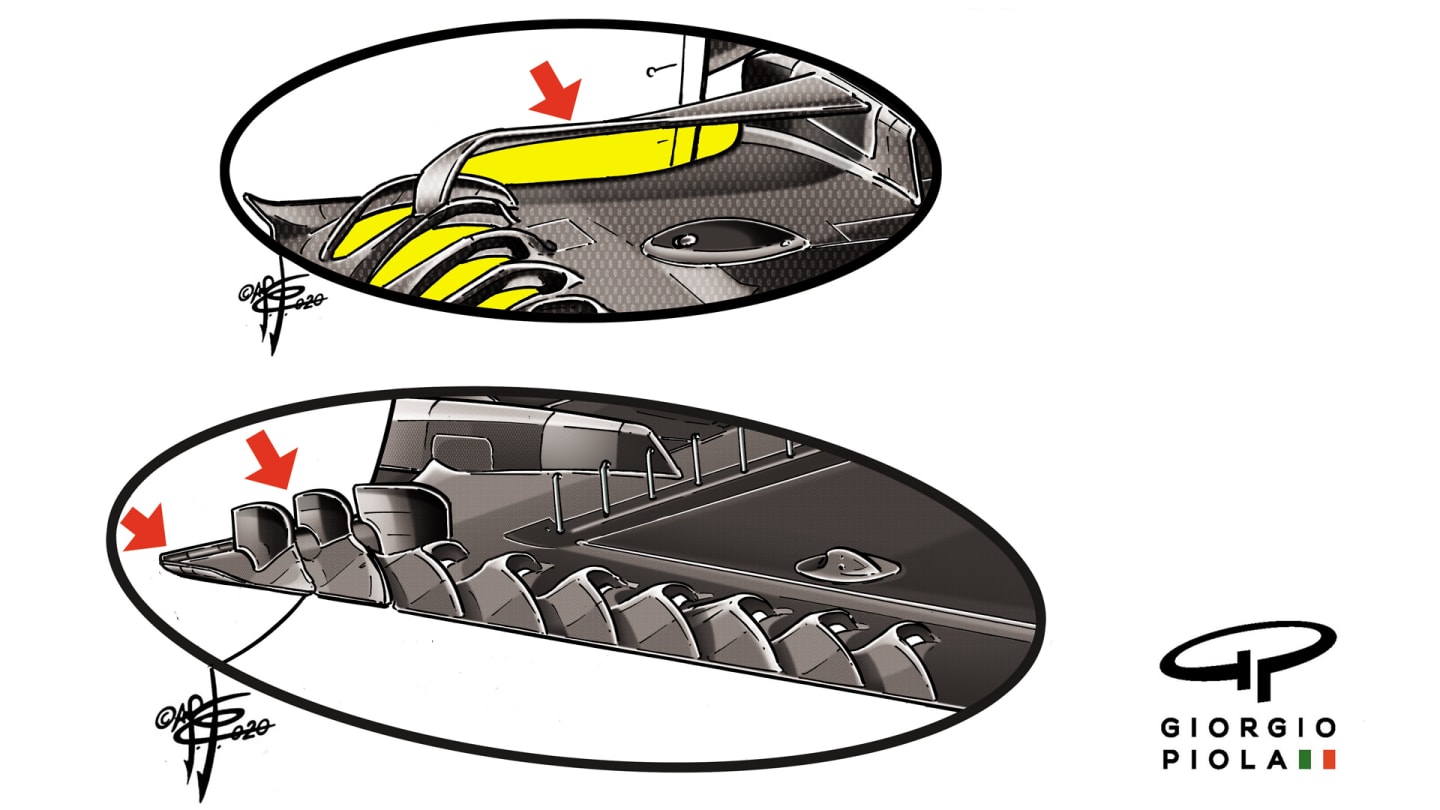
The Ferrari floor: The top image shows the previous arrangement of a single one-piece raised flap. The bottom image shows the upgrade
There was also a revision to the rear wing for the different downforce and efficiency demands of Imola, with a more neutral main plane but a more aggressive upper flap angle.
This would give greater downforce but a more than proportional increase in drag – though evidently still gave a better lap time around the Imola layout. This would all have been confirmed in simulation before the weekend.
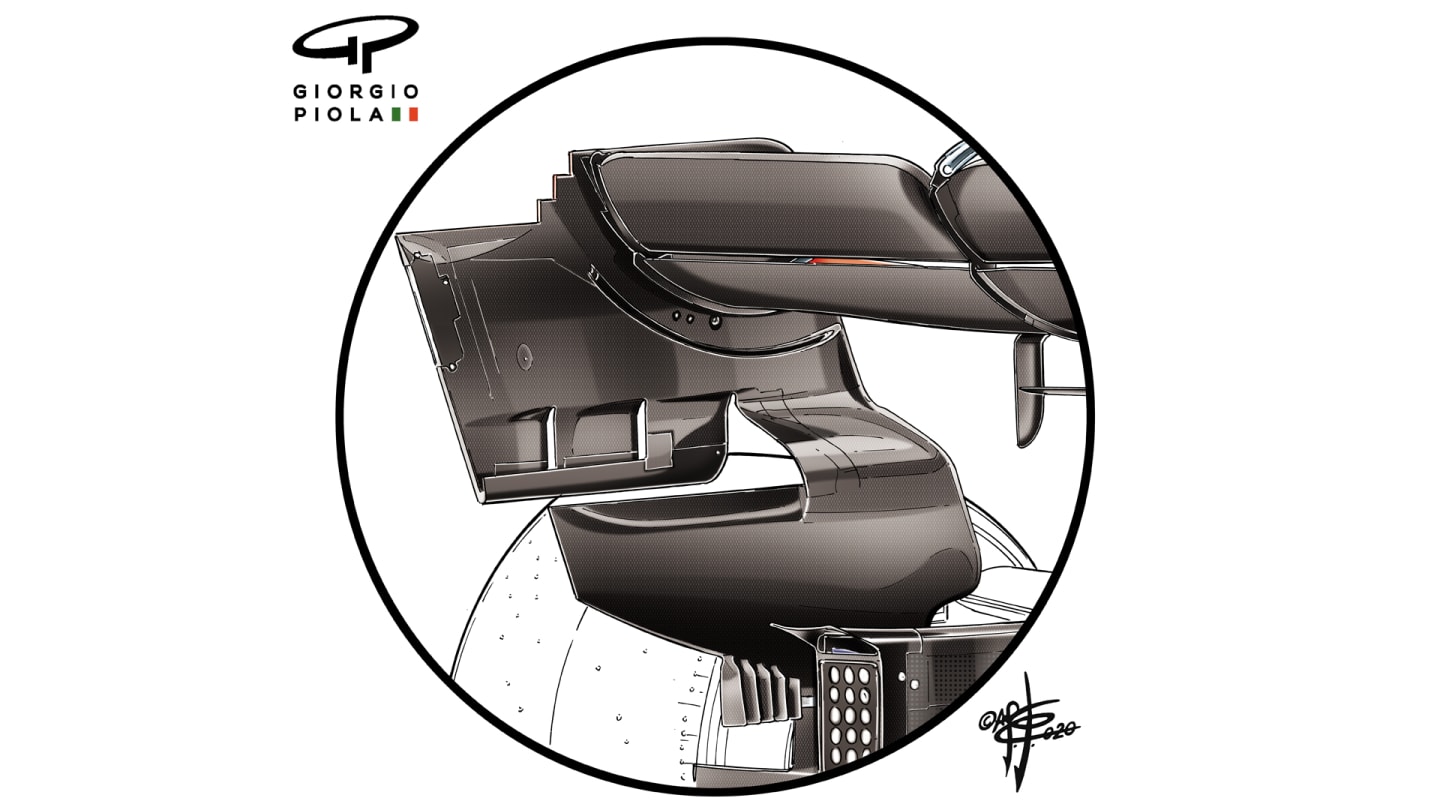
Rear wing with more neutral main plane, but more aggressively angled upper flap, but still featuring the endplate arrangement that was new at Sochi and which has been used since
The Ferrari aero and production departments have clearly been flat-out over the last few weeks despite the flurry of races, as they continue to try to haul the team back towards the front of the grid.
More Tech Tuesdays
- A close look at the ‘experimental’ new nose McLaren tested at Mugello
- F1’s latest race-winning car is AlphaTauri's AT01 – but how similar is it to the 2019 Red Bull?
- A look at the W11 upgrades that show how hard Mercedes are pushing to stay ahead
- What does the 2021 aero rules change mean for the cars – and which teams will it hurt most?
- The Mugello updates that show Racing Point's RP20 is moving away from its Mercedes W10 inspiration
YOU MIGHT ALSO LIKE
Feature What the teams said – Race day in Spain
News ‘Aggressive’ Alonso scores first points of the season at ‘special’ home race
FeatureF1 Unlocked MONDAY MORNING DEBRIEF: Verstappen made contact with Russell and Leclerc – but why were they racing each other in the first place?
News Gasly ‘relieved’ as late Safety Car in Spain leads to points as Colapinto identifies key area to improve



